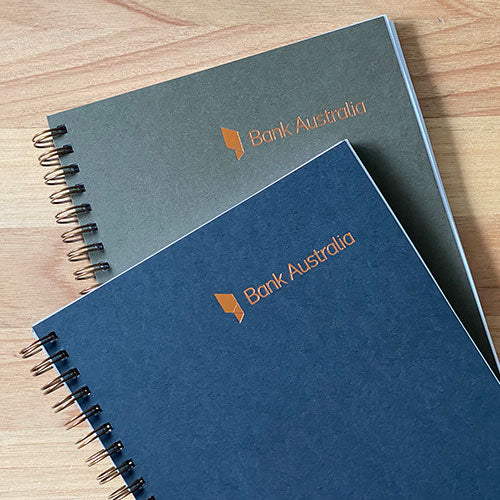Here in Australia, there’s not a lot to like about June – our long sunny days get shorter; our usually balmy temperatures drop to single digits (okay, so it’s not as bad as the Northern Hemisphere, but still… Brr!) And, to top it all off, it’s tax time!
Fortunately, there is an upside to this mid-year month: with longer evenings and more time spent indoors, June is the perfect time for a mid-year reset where you can:
- Revisit some of the life and business goals you set at the start of the year – especially those that may have fallen off your radar. (Don’t stress about this – it happens; life is busy!)
- Review your progress – and any obstacles or challenges you’ve faced.
- Refresh and, where needed, revise your goals. (Hey, things change, your goals can too.)
- Purposefully plan the actions you’ll take to kick goals in the next six months.
In this article, we’ll show how you can use your journal for a mid-year reset to get your life back on track.
These seven steps will help you to shake off the winter blues, and leave you ready to take on the second half of the year with gusto!
1. Find or create a nurturing space
Seek out or create a quiet spot where you can curl up with a warm mug of something delicious, deep-dive into your year so far… and discover ways to make the second half of the year even better than the first.
Your space could be a corner of your living room, a sunny spot in your garden, or anywhere you feel comfortable, at ease and inspired.
In fact, this could be the ideal time to refurbish your existing space or even create a new space where you can journal like a wild thing!
Use your dot-grid or bullet journal to pre-plan your ideal nook, then have fun making the space your own. For example, by adding your favourite chair and/or decorating your spot with plants, candles, books, cushions, or whatever takes your fancy – so long as, in the end, you have a comfy place that you love to spend time in.
2. Do something that makes you smile
Having a positive mindset is vital when doing your mid-year reset. You’re going to be revisiting your past and planning for the future, and it’s far better to do this feeling energised and happy, rather than depressed and miserable or even overwhelmed.
If you’re not in the right frame of mind, take some time to do something fun – something that makes you feel safe and happy – before you get started. You could play with your dog, go for a walk or jog, read a motivational verse, sing, draw, paint, listen to a happy playlist, eat a delicious treat or catch up with a dear friend or relative… You get the picture.
3. Use free-form writing to create some headspace
Once you’ve found the right physical space and cultivated a positive mindset, it’s time to clear your head of mental chatter, so you can really focus during your reset.
Yoga, breathing exercises, prayer or meditation are useful ways to tame the “monkey thoughts” that jump around in our brains, distracting us from what we’re trying to focus on.
Another excellent technique is free-form or stream-of-consciousness writing. Don’t worry, if you’ve never done this before, it’s easier than it sounds (and requires zero physical flexibility). All you do is grab your journal and write whatever comes into your head – simples!
The trick is to just let all you thoughts flow freely onto the page. Don’t censor them and definitely don’t go back and try to edit what you’ve written. Free-form writing doesn’t have to be well-written; spelling doesn’t matter; grammar is not important – heck, it doesn’t even have to make sense! It’s all about getting everything off your chest and out of your head.
Give yourself plenty of time to do this; you don’t want to feel rushed. Also, ideally you should try to do some free-form writing each day. In fact, in her book The Artist’s Way, Julia Cameron recommends three A4 pages of free-form writing per day. But, you do what feels good for you though – there are no rules.
This type of writing will help to strip away all the noise, leaving your mind cleansed of all it’s worries and free to think creatively and fearlessly about your plans for the next six months.
So, grab your journal or notebook and give it a try!

4. Revisit the plans and goals you made in January
Remember those goals you set at the start of the year? Don’t worry if you don’t. It’s easy to lose sight of and even forget our goals amidst all the hustle and bustle. And life has a way of derailing even our best laid plans.
Your mid-year reset is the perfect opportunity to refresh your memory and reconnect with your intentions and aspirations. Dust off the journal or notebook you used back then and go through your goals, priorities, plans and strategies.
Reflect on your life goals
Use your current journal or notebook to write down thoughts and emotions that surface as you reflect on the life goals and aspirations you had six months ago. Write freely, exploring your thoughts, dreams, and ambitions. Are they are still aligned with who you are today, your current desires and values, and what you want to achieve moving forward?
Bear in mind that what truly mattered to you back in January, might not be the same as what matters most to you now. And that’s perfectly okay. Use your journal to reassess and, where necessary, redefine your life goals, so they resonate with your authentic self.
Review your financial goals
In Australia, the fact that June coincides with the end of the financial year, makes this a particularly auspicious month in which to take stock of your personal and business finances.
Whether you are an entrepreneur or an employee, a mid-year reset gives you the chance review the progress you’ve made towards your financial goals, refine those goals as needed, and adjust your habits, so you’re better positioned to achieve success.
Grab your journal or notebook and reflect on your current financial position. Are you where you want to be financially? Review your bank statements to get a bird’s eye view of your spending and saving habits. Are there ways in which you can be more efficient with your money?
Are you keeping accurate records of income and expenditure? For small business owners and individuals alike, this is a great time to brush up on financial reporting and compliance requirements and make sure you’re up to date and on track.
Reassess your business/professional goals
Take a moment to consider the business/professional objectives you set at the beginning of the year. How are you tracking?
As part of your mid-year reset, evaluate your current business/professional objectives and key performance indicators (KPIs) and assess whether they are still relevant.
If so, are you likely to achieve them? Do you need to make adjustments given current circumstances? If so, what are they?
Use your journal to unearth areas where you can leverage your strengths, brainstorm fresh strategies, visualise outcomes, and develop action plans to propel your business/career forward. Then make a fresh plan that is actionable and achievable in the next six months.
5. Review your progress & the challenges you’ve faced. Don’t be too hard on yourself.
Your journal provides a safe space to dive deep into your thoughts, emotions, and experiences. Use the pages to give an honest account of your progress, analyse any challenges or obstacles you’ve faced, and identify opportunities for improvement.
Most importantly, don’t forget to acknowledge and celebrate your wins! By acknowledging your progress and assessing your journey so far, you’ll gain valuable insights for the road ahead. And, if you’re looking for ways to reward your success, head on over to our online store where you’ll be spoiled for choice.
6. Leverage different journaling techniques
Your journal or notebook is a powerful tool for introspection, goal setting, planning and reviewing your progress towards achieving personal and professional goals. Use it as a:
- Brainstorming tool to explore ideas
- Sounding board for your thoughts
- Notebook to list and prioritise tasks
- Diary to create plans and help you stay organised and focused
- Logbook to track your progress and record and celebrate your successes.
The beauty of journaling is that you’re not confined to a particular way of doing things, you’re free to stick to the one you’re most comfortable with, use a combination of techniques, or create your own original ones – be as creative as you like!
Here are just a few of the many fun and effective techniques you can use during your mid-year reset.
Visual journaling
Use visualisation techniques to get a clear picture of your desired outcomes, then draw or cut and paste pictures of these into your journal. If you like words, try to add vivid descriptions of what your life will look like when you achieve your goals. To make your aspirations feel more tangible, add as much sensory information as possible and don’t forget to describe the emotions attached to each achievement.
Mind mapping
Mind maps are great for brainstorming ideas. They help you to visualise connections between your many different goals and subgoals. This helps to clarify the steps you need to take to achieve them.
Gratitude journaling
This technique is useful when reviewing your goals and examining your progress to date. Cultivating and maintaining an attitude of gratitude, enables you to take a positive approach to the review process.
Gratitude journaling helps you to reflect on and celebrate the successes and opportunities you’ve had. It is also a powerful way to overcome fear of failure as a thankful heart focuses on the lessons learned, rather than the pain of falling short.
This journaling technique also fuels motivation and resilience, enabling you to tackle new challenges with a proactive mindset.
Habit tracking
Using your journal or notebook to track your habits is a highly effective way to ensure you stay focussed on your goals. Tracking habits fosters consistency and keeps you accountable.
In addition to habits, you can also track your results, which makes it much easier to review your progress, see where things have gone wrong, and work out ways to remedy the situations in future.
7. Create a roadmap for the next six months
Vision without action is merely a dream. Action without vision just passes the time. Vision with action can change the world.
Once you’re done reviewing and refining your goals for the next six months, it's time to create a roadmap that will guide you towards success. Here’s how…
A. Prioritise your three top goals for the next six months
Select the three big goals that are most important to you and prioritise these for the next six months. It might be hard to pick just three, but remember there’s only 24 hours in a day.
Clarifying your priorities and focussing on just three big goals will help you allocate your time, energy, and resources more effectively in the coming months. By focussing on your three main goals, you’re giving yourself the best possible chance of success and preventing burn out.
B. Create an action plan
Break down your three big goals into actionable tasks. Assign deadlines to each task to ensure accountability and maintain momentum. Your plan should include milestones, regular review periods and rewards for achieving your milestones.
C. Identify obstacles and opportunities
Consider the obstacles and challenges that have hindered your progress thus far. Explore them in your journal and reflect on potential solutions or alternative approaches.
Look ahead to the next six months and identify any new challenges or obstacles that might hinder your progress. Also identify any new opportunities that may arise that you'd like to pursue. Use your journal or notebook to brainstorm ideas and come up with creative strategies that will help you overcome obstacles and capitalise on opportunities.
Consult your family, wall planner, diary, email inbox and social media profiles and take note of all the events and functions you have committed to for the next six months in your journal.
As you plot your course, consider the resources, skills, and support required to accomplish your goals. Use your notebook or journal to record ways to upskill, obtain resources and get the help you need.
D. Incorporate accountability and reflection
Two excellent ways to stay motivated are to track your progress in your journal or notebook, and to enlist an accountability buddy. Schedule regular catch-ups with your buddy where you can discuss your progress and obtain encouragement and advice.
Most importantly, take time out for regular reflection. Make journaling a habit by dedicating time each week to reflect on your achievements, challenges, and lessons learned. Let your journal become a trusted companion on your journey towards a purpose-driven life that you love.
Ready to smash some goals in the second half?
Grab a Notely journal or notebook, and get ready to smash the next six months!
If you’ve been doing it tough in the first half of the year, you’ll benefit from the renewed focus and direction that comes with pushing the reset button. Everyone loves a good comeback, so go for it!
If you’ve been kicking back-to-back goals this year, your mid-year reset will give you the chance to give yourself a well-deserved pat on the back and ensure that you finish the year on a high. Again, go for it!
Browse our fantastic range of eco-friendly journals, wall planners, cards, and notebooks today. With every Notely product you purchase, you’ll enjoy the special pleasure that comes from knowing you’re helping to replant the planet, one note at a time.

![Spearmint A6 Pocket Notebooks [BULK 8 PACK] - Notely Lined](http://notely.com.au/cdn/shop/products/spearmint-a6-pocket-notebooks-bulk-8-pack-notely-399099_1600x.jpg?v=1699275130)









